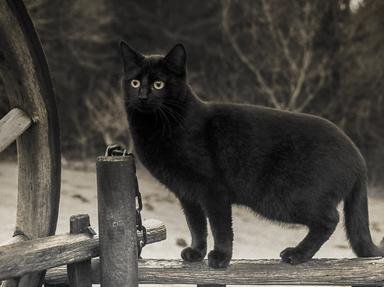Quiz Answer Key and Fun Facts
1. We'll start in southern Nottinghamshire. What village is the fabled and traditional place of fools, known for trying to fence in cuckoos, drown fishes in water, and grind wheat with wool wheels?
2. The small village of Ompton in Nottinghamshire placed great importance in the bees they kept and their actions. Pieces of black cloth and plates of biscuits and wine were placed near the bee hives when what event happened?
3. No journey of Nottinghamshire would be complete without a Robin Hood question. The River Rain is now mostly dried and diverted, but near what town on the banks of this small river did Robin Hood have his alleged battle with Friar Tuck?
4. Let's move on to Dorset, shall we? The Iron Age hill fort of Badbury Rings near Shapwick is at the junction of two major Roman roads. In the trees at its crest are what manifestations of King Arthur?
5. Like the Uffington Stone Horse, the Cerne Abbas Giant could come from the pre-Christian era or could be a late 17th century mockery of Lord Cromwell. Whatever its origin, this great hillside figure was briefly neighbors with what modern hillside figure?
6. From the unassuming town of Stourpaine, Dorset, comes a legend of a ghost of a maltreated dog periodically running through town looking for its first, kind master. Though this dog is invisible, and all that can be noticed is the eerie rattling of its chains, what does it share with other ghostly dog legends in England (hint: think Led Zeppelin)?
7. Let's move westward on to Shropshire. Colemere, a lake near the town of Colemere (no way!), seems too shallow to have a sunken chapel lost in its depths. However, if you listen closely on windy, moonlit nights, what can you hear emanating from the dark depths?
8. Now for two Cornwall bits of folklore. Looming from Carn Brea like an ancient mother-in-law is a castle that dates back to Neolithic times. After being edified in Iron Age times, a small medieval castle completed the building, rising up from massive slabs of granite outcroppings. These stones, especially on the western end, are evidence of which legendary race?
9. Not surprisingly, Cornwall has a wealth of nautical folklore and legends. One of the most interesting concerns Porthcurno. Believed to have once been the main port of Cornwall, the cove was filled with sand over the centuries, allowing what to be seen on the beach and in the inland valleys?
10. Finally, what figure of legend underwent a radical shift in perception, changing from an early 19th century, blue-fire breathing, demonic figure with metal claws, glowing eyes and an incredible vertical leap, to a late 19th century Robin Hood-type character who defeats the wicked whilst in disguise?
Source: Author
coventry815
This quiz was reviewed by FunTrivia editor
Pagiedamon before going online.
Any errors found in FunTrivia content are routinely corrected through our feedback system.
